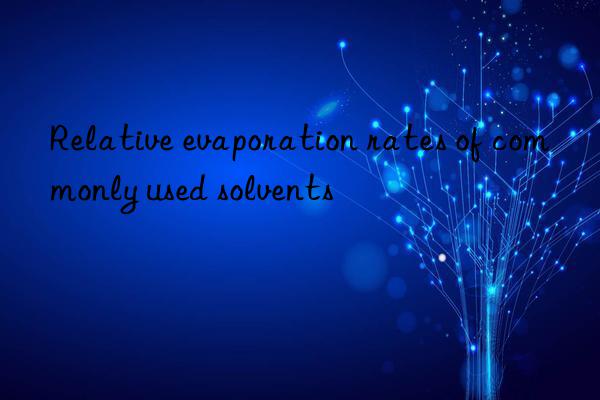
The relative emission rate of solvents is mainly used in the paint and ink industries. The dry coating film is formed during the solvent development process. In this process, the role of the solvent is to control the flow characteristics when the coating film is formed. If the solvent evaporates too quickly, the coating film will neither level nor sufficiently wet the substrate, and therefore cannot produce good results. Adhesion. A solvent that evaporates too quickly will also cause the water vapor on the surface of the wet film to condense due to rapid cooling, resulting in a white film. If the solvent evaporates too slowly, it will not only delay the drying time, but also cause the film to sag and become dull. Thin. If the solvent composition undergoes undesirable changes during the evaporation process, resin precipitation and coating film defects will occur. Therefore, the evaporation rate of the solvent is an important factor affecting the quality of paints, inks and coating films. The relevant data are given below for your reference.
Boiling point and evaporation rate table of solvents
Name | Boiling point, ℃ | Volatilization rate |
petroleum ether | 30-120 | --- |
200# solvent oil | 145-200 | 0.18 |
n-heptane | 98.4 | 0.2 |
2-nitropropane | 120.3 | 1.2 |
Tetrahydrofuran | 65 -66 | 4.8 |
propylene glycol monomethyl ether | - --- | 0.4 |
acetate mixed ester | -- -- | 0 |
Propylene glycol methyl ether
----
0.4
acetate mixed ester
----
0



 微信扫一扫打赏
微信扫一扫打赏
